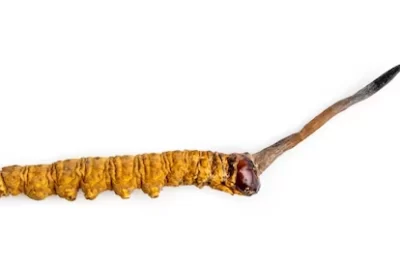In English, the fungus commonly referred to as the Caterpillar fungus is scientifically known as Ophiocordyceps sinensis (formerly Cordyceps sinensis). However, in Asia, particularly Tibet, it is better known as Yartsa Gunbu. In Nepali, it is transliterated as यार्चागुन्बू, Yarshagumba, Yarchagumba or Yarsagumba, while in Bhutan, it is referred to as Yartsa Guenboob. This term translates to “summer grass, winter worm.”
Yarshagumba comprises two parts: the lower portion is a deceased caterpillar, while the upper portion is a fungus. The fungus has a small spike with dark brown fructification and a yellowish-white stalk. The size of the fungus ranges from 4 to 12 cm in length and 0.14 to 0.4 cm in circumference.
Where is Yarshagumba found?
Yarshagumba is commonly found in meadows situated at an altitude of 3,500 meters (11,500 feet) and above, located in the Tibetan Plateau in Tibet and the Himalayan regions of Bhutan and Nepal.
In Nepal, it is mainly found above the snowline, specifically in the districts of Dolpa, Jumla, Humla, Kalikot, Baglung, Mustang, Manang, and Rasuwa in the western and central regions. In the Jumla district, the species is mainly confined to the Patarasi, Chhumchaur, Dillichaur, and Patmara VDCs within the eastern sector of the Chaudavisa river valley.
Lifecycle of the Yarshagumba
During the monsoon season, spores of the fungus attack caterpillars shortly after they emerge from their cocoons. The fungus grows on the caterpillar and eventually causes its death. The fungus can also regenerate from spores produced by the dead caterpillar. The caterpillar may still be alive if the fungus is collected early in the monsoon season.
After the snow melts, you can observe the fungal part of this species sprouting from the ground while the caterpillar part remains underground. The fungus takes around five to seven years to undergo its complete life cycle and generate the natural product.
Yarshagumba only grows under particular and hard-to-duplicate conditions. The species grows only in the Himalayas. There, the temperature is low year round. The high altitude limits the Oxygen available. These harsh conditions, which make life difficult even for most fungi, are perfect for growing Cordyceps.
The Yarshagumba species can only thrive under specific and challenging conditions that are difficult to replicate. This fungus grows solely in the Himalayas, where the temperature remains low throughout the year. Additionally, the high altitude restricts the amount of available Oxygen. These harsh conditions, which make life difficult even for most fungi, are perfect for growing Yarshagumba.
Use of Yarshagumba in traditional Asian medicines
Yarshagumba may not seem impressive at first glance. Still, it holds great value in traditional Chinese medicine for its excellent balance as it is considered to be composed of both an animal and a vegetable.
In the Western world, it’s not widely recognized, and when it is acknowledged, it’s often referred to as a “Natural Viagra.” However, in regions of Asia with significant Chinese populations, it’s promoted as a cure-all remedy that enhances energy and endurance, providing a sense of well-being.
Economics and Impact
Every village or community has the right to a specific area for collecting valuable resources. The collection season lasts roughly three weeks and has particular opening and closing days based on the region. However, conflicts between villages over access to the resource’s grassland habitats have become a significant issue for local governing bodies, sometimes leading to fatalities.
The income generated from Yarshagumba has significantly improved the lives of many isolated communities in the Himalayan region. However, there are concerns that its collection may threaten the environment of the Tibetan Plateau where it is found. Although it has been gathered for centuries and remains prevalent in the area, the current collection rate is much higher than in the past.







Leave a Reply